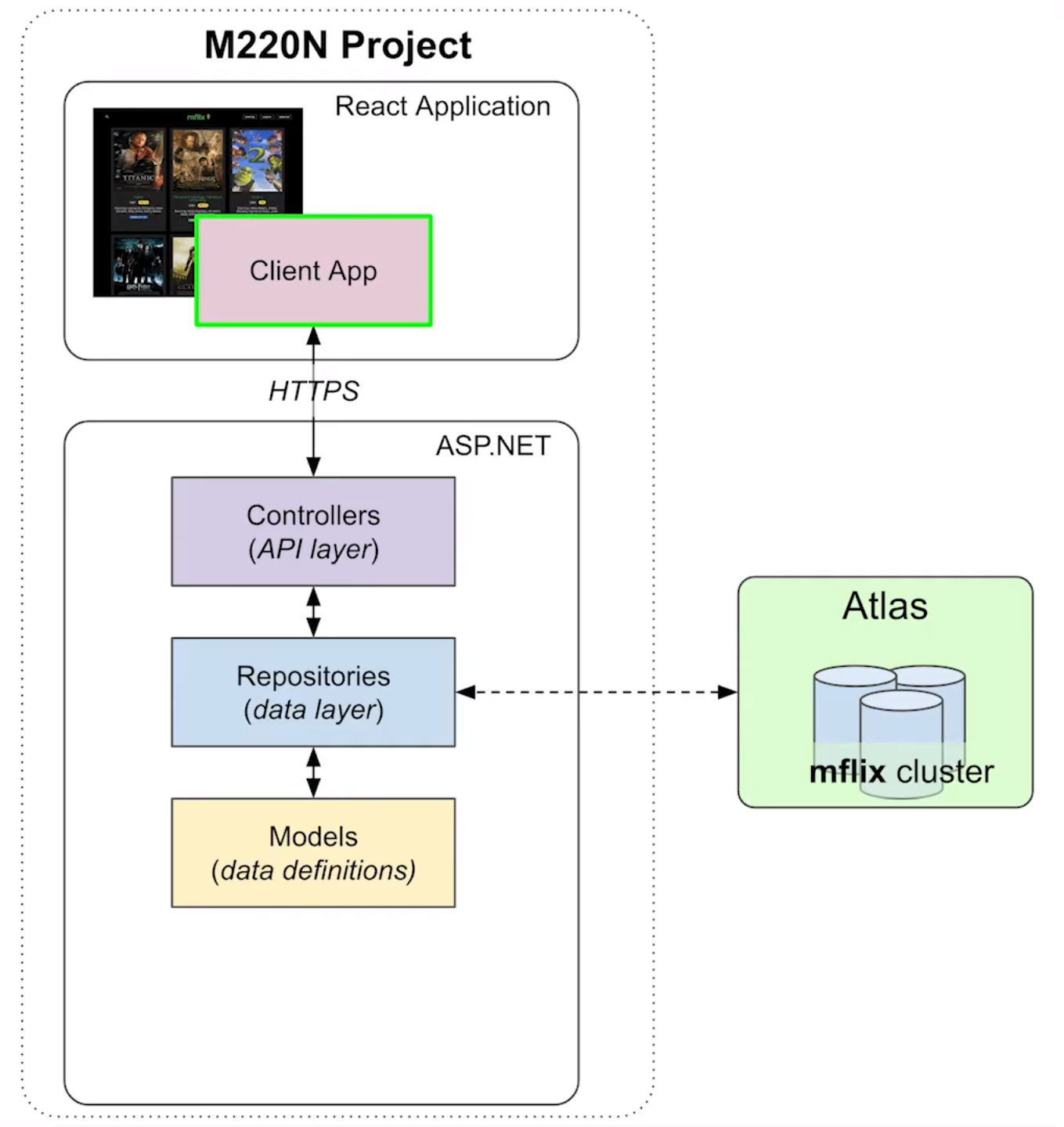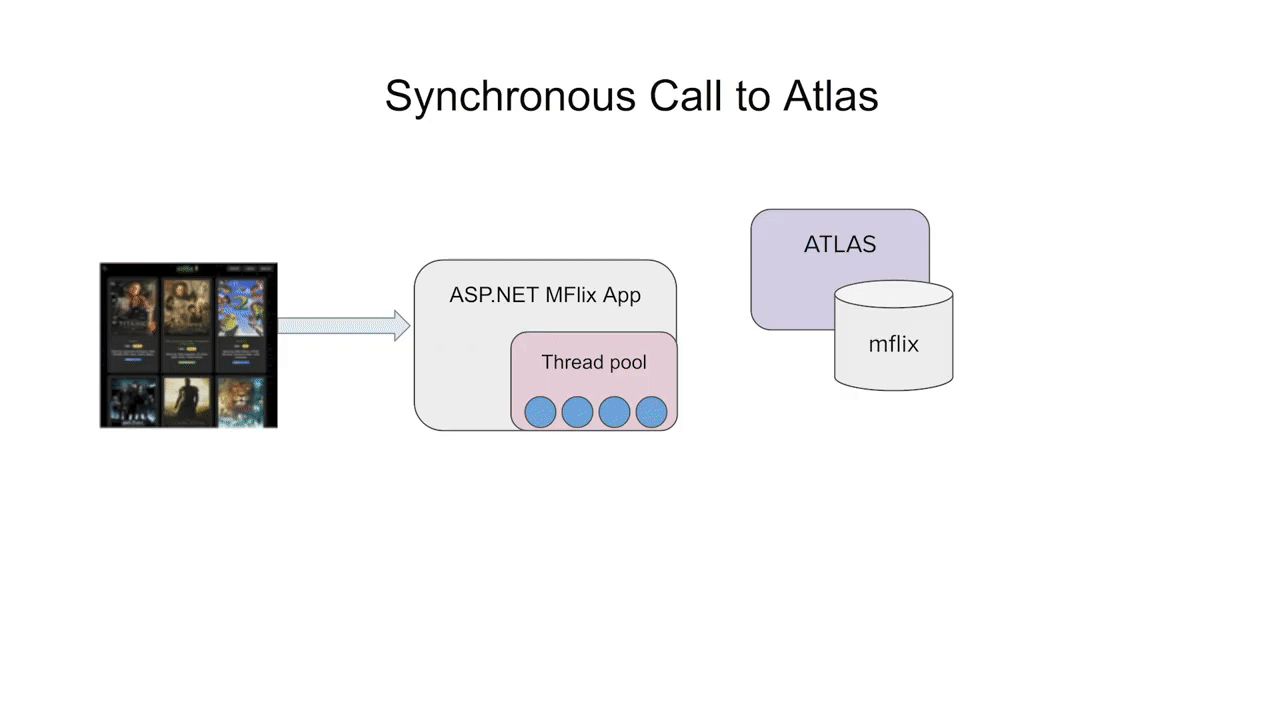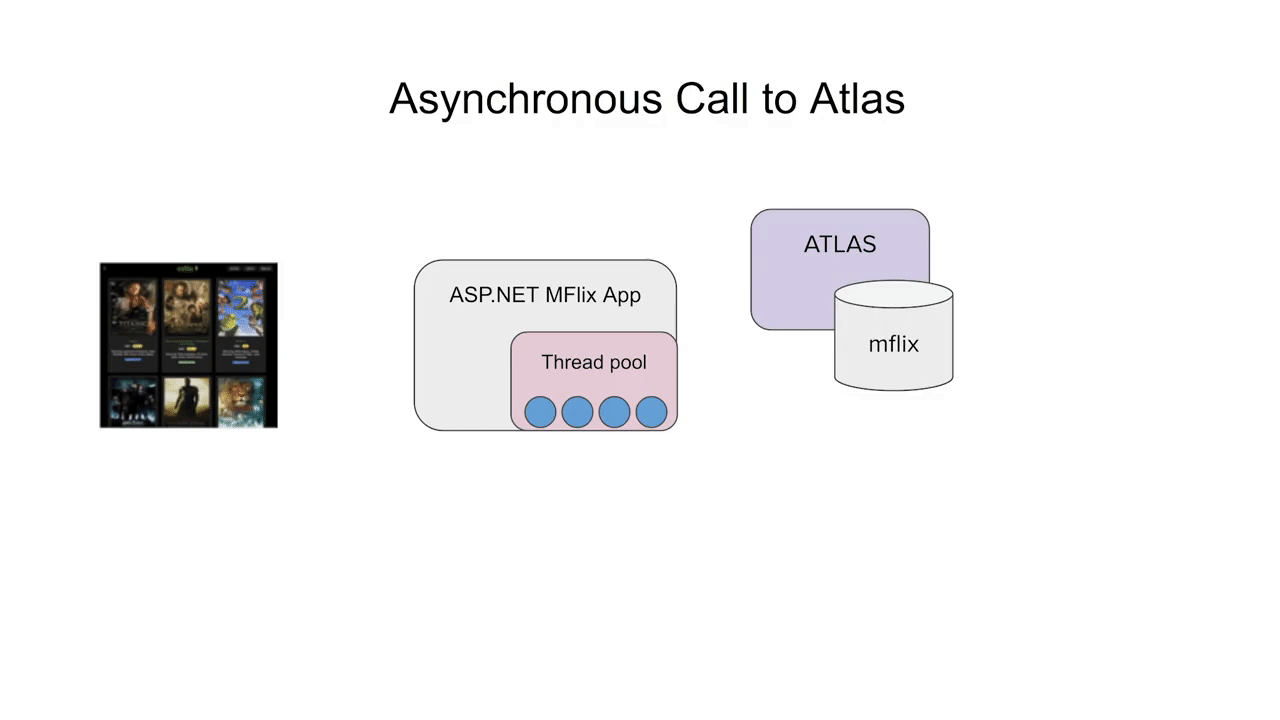Using the Driver
mflix project structure

Approaches to working with data
The MongoDB driver supports many different approaches to working with your data. For instance you can read data in 4 different ways using the driver:
// Using MQL as a string -> NOT TYPE SAFE
var filter = "{ price: { $gt: 400 } }";
var expensiveGuitars = guitarsCollection.Find(filter);
// Using BsonDocument object -> NOT TYPE SAFE
var filter = new BsonDocument("price", new BsonDocument("$gt", 400));
var expensiveGuitars = guitarsCollection.Find(filter);
// Using the Builders class -> Only field names NOT type safe
var builder = Builders<BsonDocument>.Filter;
var filter = builder.Gt("price", 400) & builder.Lt("price", 600);
var midrangeGuitars = guitarsCollection.Find(filter);
// Using Mapping Classes and LINQ -> TPYE SAFE
class Guitar
{
[BsonID]
public int Id { get; set; }
public string Make { get; set; }
public string Model { get; set; }
public double Price { get; set; }
}
var guitars = new List<Guitar>();
var expensiveGuitars = guitars.Where(g => g.Price > 400).ToList();
Async Programming Principles
Synchronous
- Request arrives
- Thread from Thread pool is assigned
- Thread makes request to external resource and waits for response
- Thread can not handle any other requests until response is received

Asynchronous
- Request arrives
- Thread from Thread pool is assigned
- Thread makes request to external resource and returns immediately to the thread pool
- When the external ressource returns the response, ASP.NET grabs any available thread to handle the call

How to use the asynchronous model
Synchronous
public ActionResult GetMovie(string movieId) { ... }
Asynchronous
public async Task<ActionResult> GetMovieAsync(string movieId, CancellationToken cancellationToken = default) { ... }
Asynchronous Repository Method
public async Task<Movie> FetchMovieAsync(string movieId, CancellationToken cancellationToken = default)
{
return await _movies.Collection
.Find.(Builders<Movie>.Filter.Empty)
.FirstOrDefaultAsync(cancellationToken);
}
Using Projections with the driver
To limit the amount of data that MongoDB sends to applications, you can include a projection document to specify or restrict fields to return. With the C# driver we do it like this:
var projectionFilter = Builders<Movie>.Projection
.Include(m => m.Title)
.Include(m => m.Year)
.Include(m => m.Cast)
.Include(m => m.Id)
Advanced Read Examples
Sorting first, limiting the results, and skipping so we get different results for each page:
var sortByYearDescending = Builders<Movie>.Sort.Ascending(m => m.Year);
var movies = await _moviesCollection.Find<Movie>(Builders<Movie>.Filter.Empty)
.Sort(sortByYearDescending)
.Limit(moviesPerPage)
.Skip(pageNumber * moviesPerPage)
.ToListAsync();
Search for any match between two arrays:
public async Task<IReadOnlyList<MovieByCountryProjection>> GetMoviesByCountryAsync(
CancellationToken cancellationToken = default,
params string[] countries
)
{
var project = Builders<Movie>.Projection.Include(movie => movie.Title);
return await _moviesCollection
.Find(Builders<Movie>.Filter.AnyIn(movie => movie.Countries, countries))
.SortByDescending(m => m.Title)
.Project<MovieByCountryProjection>(project)
.ToListAsync(cancellationToken);
}